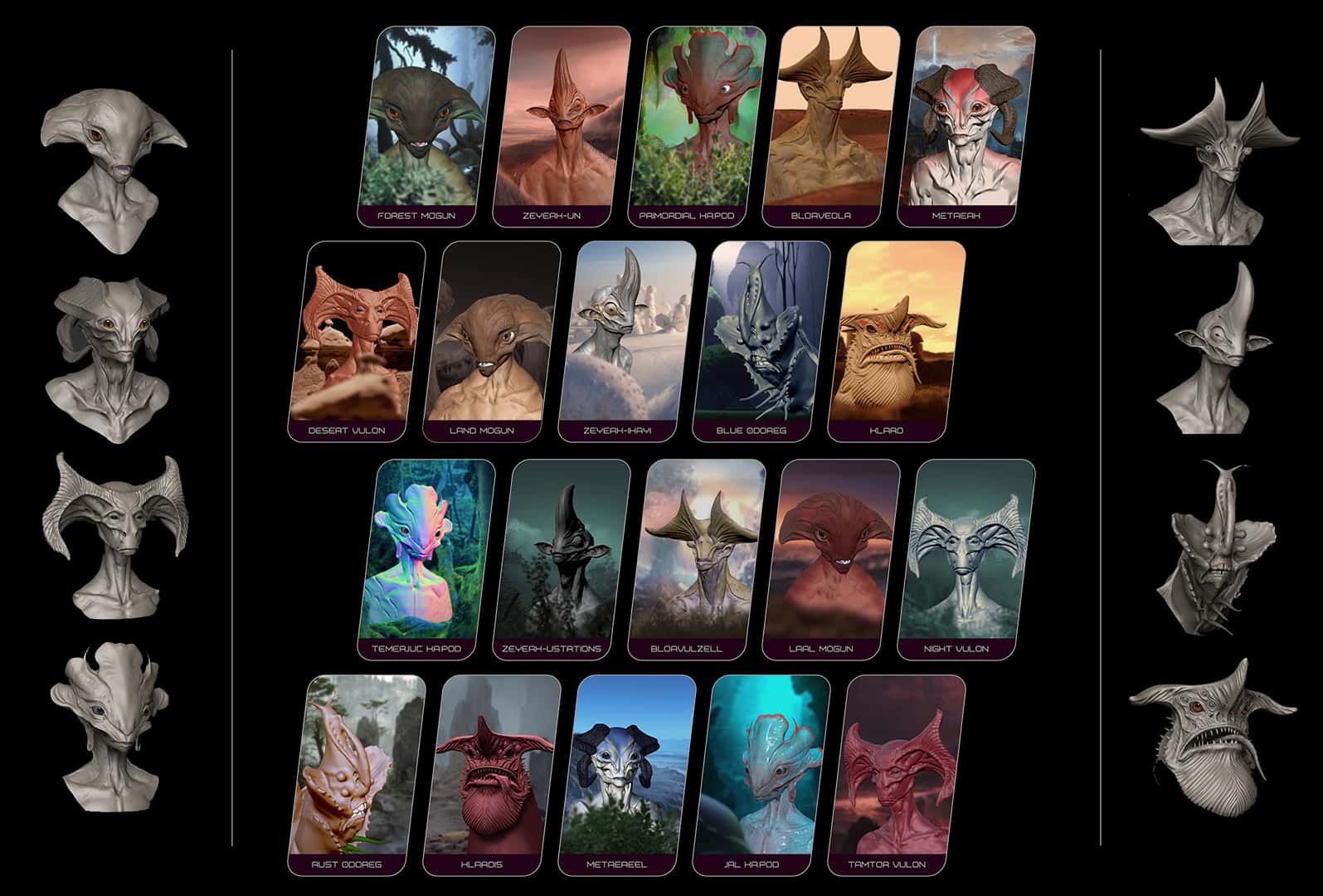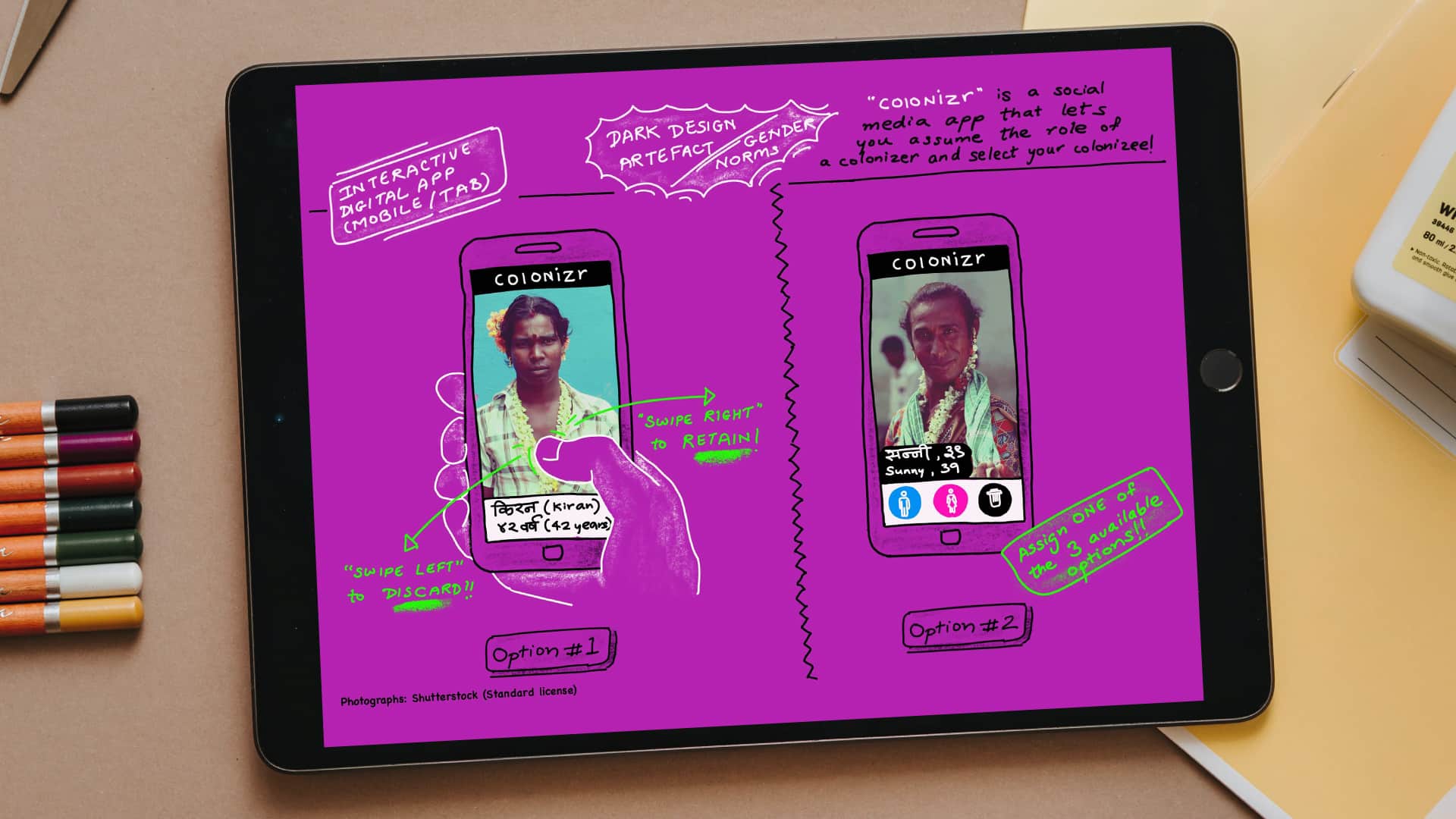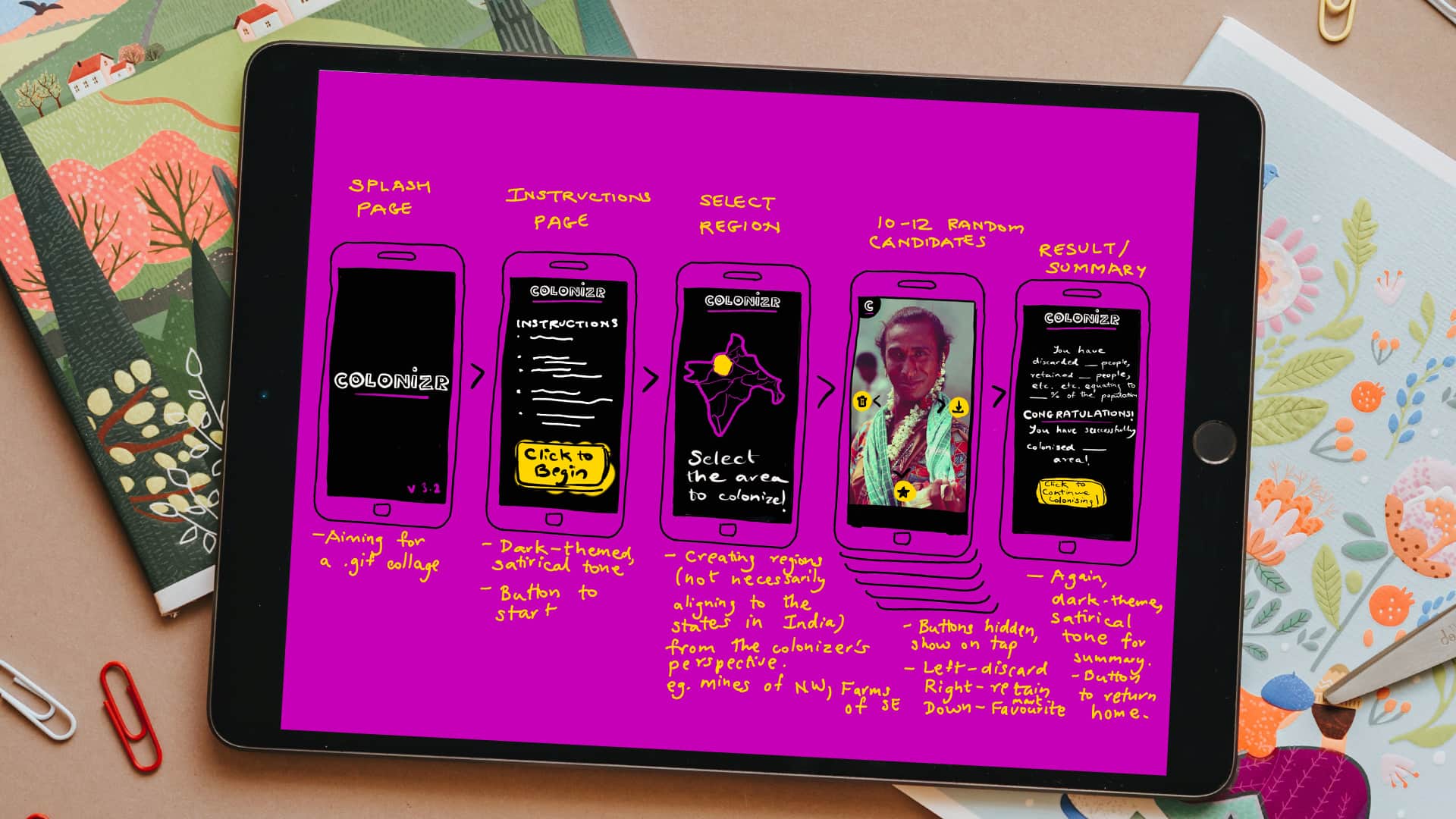Play COLONIZR in your web browser.
By embedding dehumanising colonial policies into a fun, thoughtless game application, the design compels users to confront menacing acts of colonialism and its repercussions that haunt Indian people, especially some marginalised communities, even in the present day. Placing it in a speculative future helps provide a safer space for reflection and discussion on the devastations that colonial decisions had and continue to have on communities that were displaced during this era.
The envisioned experience necessitated viewers to engage in menacing colonial practices actively. It needed to be framed in a context that was familiar to users, to get them to participate, despite a lingering discomfort.
The tenets of a digital user application were applied to simplify, or rather oversimplify, these colonial acts into a game, so users could engage with them with ease. Applying Dark Design, a satirical undertone was introduced in the narration that was crucial and intrinsic to this user journey. The focus of the design was to not create a perfect gaming experience, but to use the game as a guise and embed a discursive Dark Design narrative highlighting the devastations of colonialism.
Influenced by western trends of colonising, this app has been made to teach this trade of Empires to its user through a gamified approach. The early concept included people from real-world marginalised groups. As the narrative setup to this game, the user was asked to assume the role of a coloniser who has acquired a new territory. The coloniser needed to “discard” a percentage of the colonised populace to bring order and decorum in the colonised land and, most importantly, make it profitable. It was completely up to the discretion of the coloniser to decide who was fit to be “retained” and who could be be “discarded”. The wireframe illustrated and the composition of the interface and the player’s journey through the application, that included pages for introduction, rules and summary of results.
Construction
The early concept of COLONIZR, which depicted the Indian populace as the colonised subjects lacked the ambiguity that might have been needed in Dark Design. It seemed more of an alternative present instead of a speculative future. Seeking inspiration from the Afrofuturist approach of applying space analogies to address difficult topics of the past and present, the concept of COLONIZR was reapplied to space colonisation – where the user assumes a role of a coloniser from future India who has colonised a planet in space.
Using the wireframe as a blueprint, the build was created using p5JS web editor (Processing Foundation). The focus was on the engineering composition of elements of the game. The app was designed such that the build could work on desktop, tablet, or mobile device. To allow players to retry the game, a branching screen with the option to select a region from the two available was introduced. I imagined each region comprising of different alien species or sub-species.
View the full p5JS sketch for COLONIZR.
Alien models were procured, edited by applying shaders, textures and different backgrounds to build a narrative of their habitat and lifestyle. Eight 3D models were repurposed to create 20 alien character designs for the game (10 per region).

A series of brief narratives were written for the alien species to give them a sense of place and character. These narratives were placed after the summary of results, at the end of the game, after users had made their decisions to retain or discard the alien populace. This was done with the intent of lending a climactic revelation of the impact of the player’s decisions on the lives of those discarded. Furthermore, a button hyperlinked to a blogpost was added. This transitioned the player out of the fiction, and invited them to engage in a discursive intervention.










